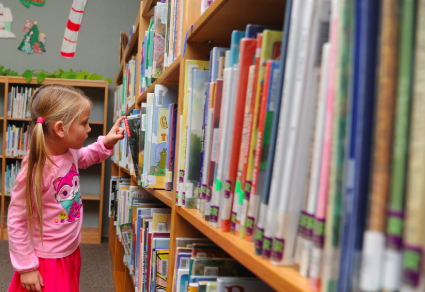By Chelsea Fox ’19
Growing up, every kid had a favorite book they forced their parents to read every night. Whether it was a Dr. Seuss classic, a Shel Silverstein poem or a Roald Dahl chapter book, it was a book that made the kids feel loved, safe and supported.
A new English class, Children’s Literature, is focused on analyzing children’s books and the effect they have on the reader. While the class discusses the prominence of images, designation of the term “classics” and cultural values that are represented, the main goal of the course is to understand the role of children’s books in developing a child’s identity.
Teacher Kim Herzog’s favorite part of the course is studying books she read as a child and understanding them in a new perspective. “It’s a super engaging course,” Herzog said, “because you are returning to literature you love but also learning new things about it along the way and kind of being able to reread.”
In Children’s Literature, there is a large emphasis on the importance of images. In one activity, students were given construction paper, glue and abstract images and were tasked with creating an image that represents the message of Goldilocks and the impact it has on its audience.
Ali Green ’20 really enjoyed this project and appreciated how much it made her think. “It was so interesting to see how every detail in the image has a reason as to why it is like that or there,” Green said. “It’s so cool because I have never thought of it like that before.”
Since this is the first year Children’s Literature is being offered, there are still some kinks to work out. Herzog believes her biggest obstacle is her tendency to take on too much. “I get overly excited and I want to do all of these amazing things,” Herzog said, “but then I have to take a step back and say if I’m feeling overwhelmed then my students are feeling overwhelmed.”
Overall, Children’s Literature has been very popular among students. Simone Lantier ’20 is no exception. “I chose to take this class because it was working on something completely different than I’ve ever worked on in an English class,” Lantier said. “I was really interested to see what we would learn throughout the semester.”














































